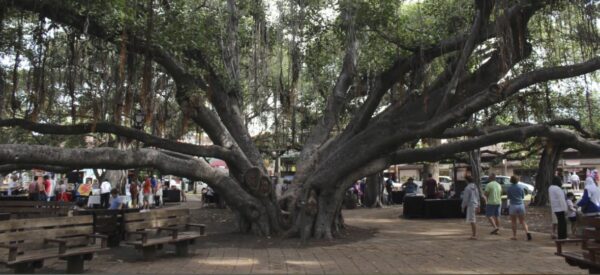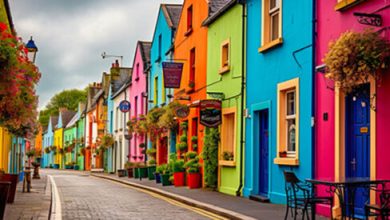‘NOT THERE ANYMORE’: Historic Lahaina reduced to rubble and ash

The wildfire that has brought sheer devastation to Maui is especially heartbreaking for Hawaii because it struck one of its most historic towns and the onetime capital of the former kingdom.
Lahaina holds deep cultural significance for Hawaiians. The town was once the royal residence of King Kamehameha, who unified Hawaii under a single kingdom by defeating the other islands’ chiefs. His successors made it the capital from 1820 to 1845, according to the National Park Service.
Kings and queens are buried in the graveyard of the 200-year-old stone Wainee Church. Later named Waiola, the church that once sat up to 200 people was photographed engulfed in flames.
Across the town, landmarks were charred beyond recognition and entire neighbourhoods that had been a vibrant vision of colour and island life have been reduced to gray ash.
Block after block is nothing but rubble and blackened foundations, including along famous Front Street, where tourists shopped and dined just days ago.
“Lahaina, with a few rare exceptions, has been burned down,” said Hawaii Gov. Josh Green. “Without a doubt, it feels like a bomb was dropped on Lahaina… We are heartsick.”
More than 1,000 structures were destroyed and boats in the harbour were scorched.
Many businesses, including one of the town’s oldest shops, were destroyed. As owner Tiffany Kidder Winn assessed the damage at the Whaler’s Locker gift store, she said, “I couldn’t even tell where I was, because all the landmarks were gone.”
The fire consumed much of Lahaina’s historic Front Street, home to restaurants, bars, stores and what is believed to be the United States’ largest banyan, a fig tree with aerial roots that grow out of branches and eventually reach the soil and become new trunks. Reports say that while the famed Banyan tree is still standing, it is scarred and unknown whether it will survive.
“All the places that are tourist areas, that are Hawaiian history, are gone, and that can’t be replaced,” said Richard Olsten, a helicopter pilot with Air Maui who surveyed the scene. “You can’t refurbish a building that’s just ashes now. It can’t be rebuilt – it’s gone forever.”
Francine Hollinger, a 66-year-old Native Hawaiian, said witnessing the destruction of Front Street was “like losing a family member … because they’ll never be able to rebuild it, like we wouldn’t be able to bring back our mother or father.”
The Lahaina Historic District is home to more than 60 historic sites, according to the Advisory Council on Historic Preservation.
For Native Hawaiians, the town is a connection to their ancestors. Lahainaluna High School was where royalty and chiefs were educated, and also where Kamehameha and his Council of Chiefs drafted the first Declaration of Rights of the People and the Constitution for the Hawaiian Kingdom.
Lahaina also has a rich history of whaling, with more than 400 ships a year visiting for weeks at a time in the 1850s. Crew members sometimes clashed with missionaries on the island.
Sugar plantations and fishing boosted the economy over the decades, but tourism is the main driver now. Nearly three million visitors came to Maui last year, and many of them come to the historic town.
The fire is “just going to change everything,” said Lee Imada, who worked at the Maui News for 39 years before retiring. “It’s just hard to register, even right now, what the full impact of this is going to be.”
He recalled walking down Front Street among the tourists as they shopped or ate, looking at the banyan tree, and enjoying the beautiful ocean views from the harbour.
“It’s just sort of hard to believe that it’s not there,” Imada said. “Everything that I remember the place to be is not there anymore.”
First published at Travel Industry Today





